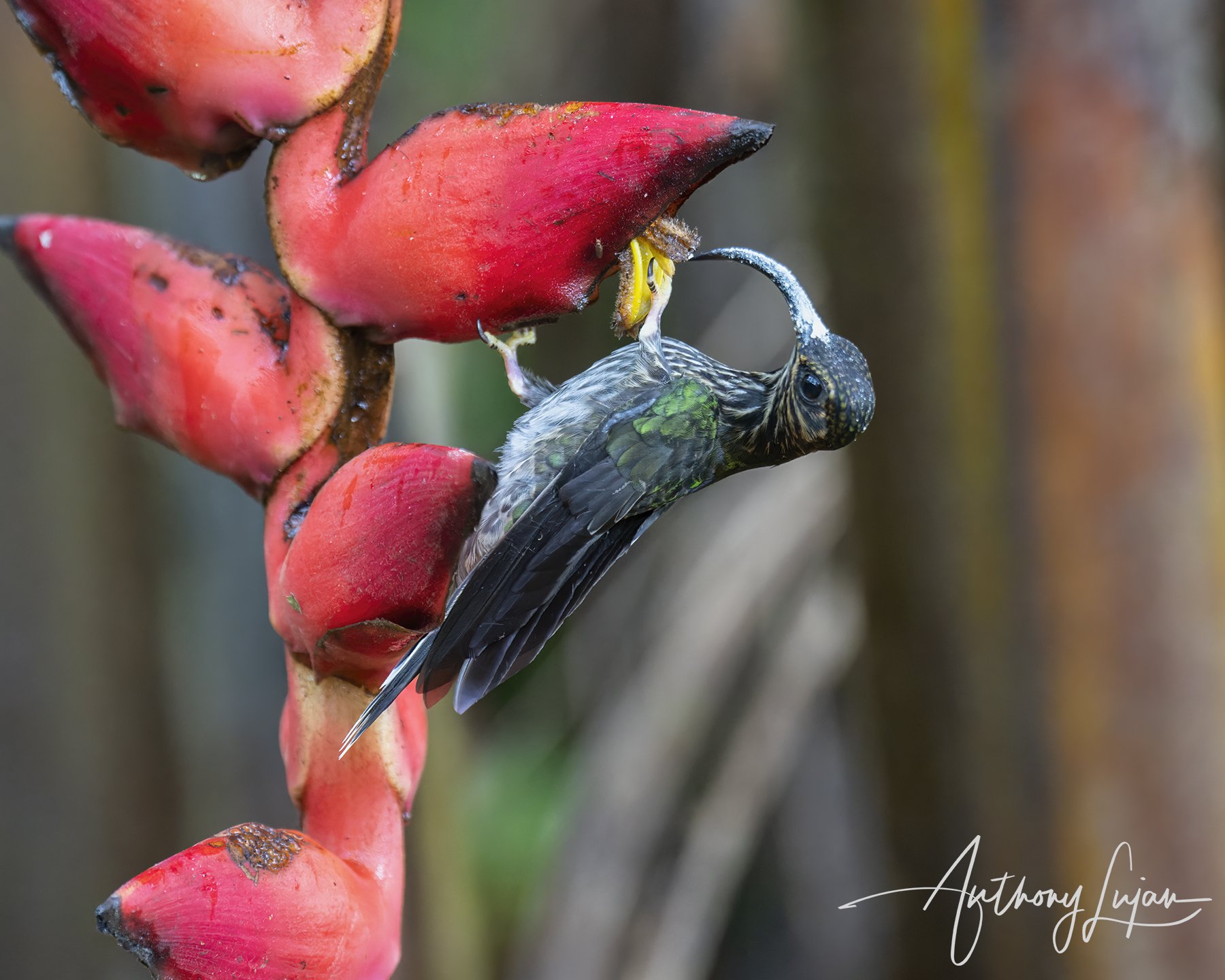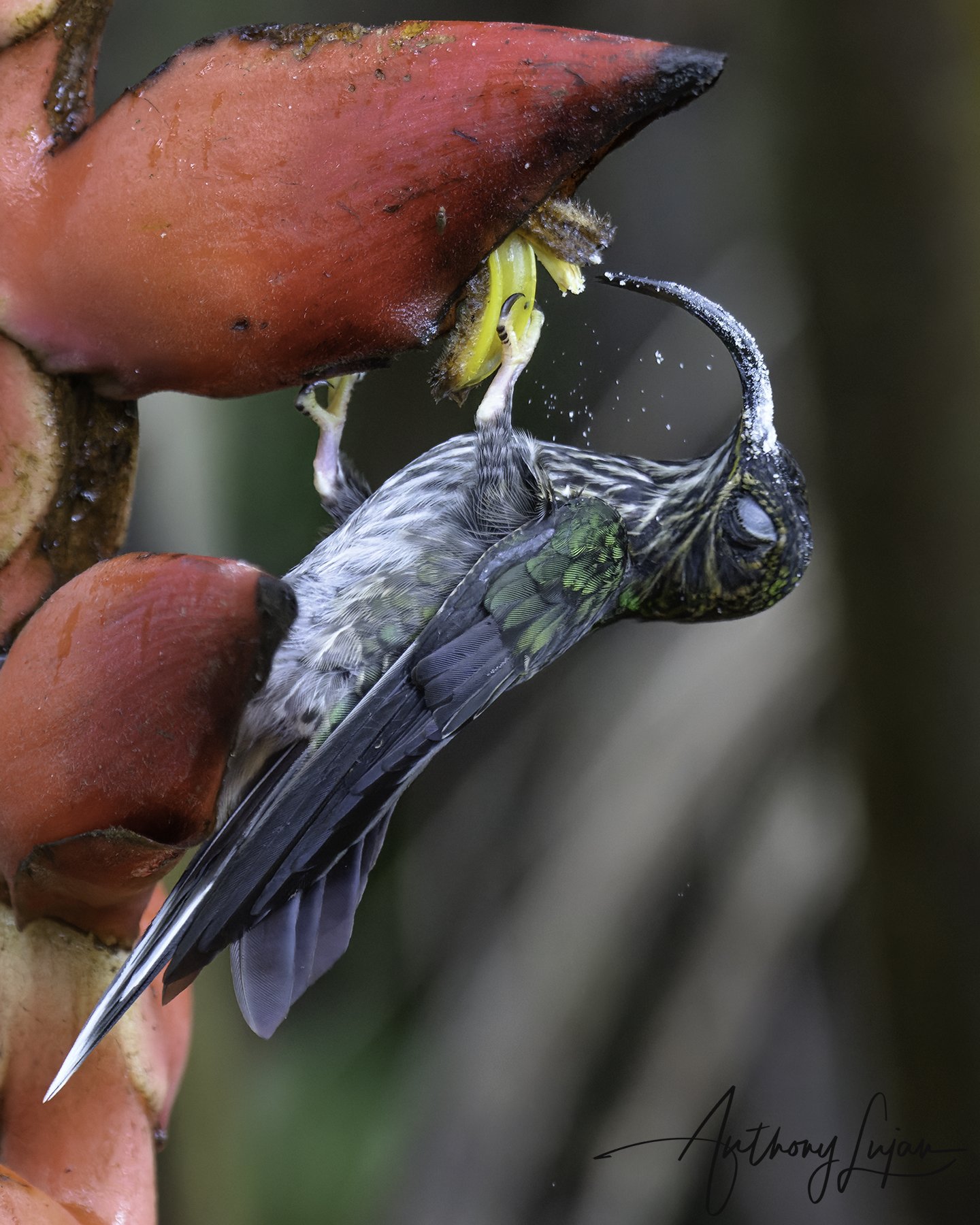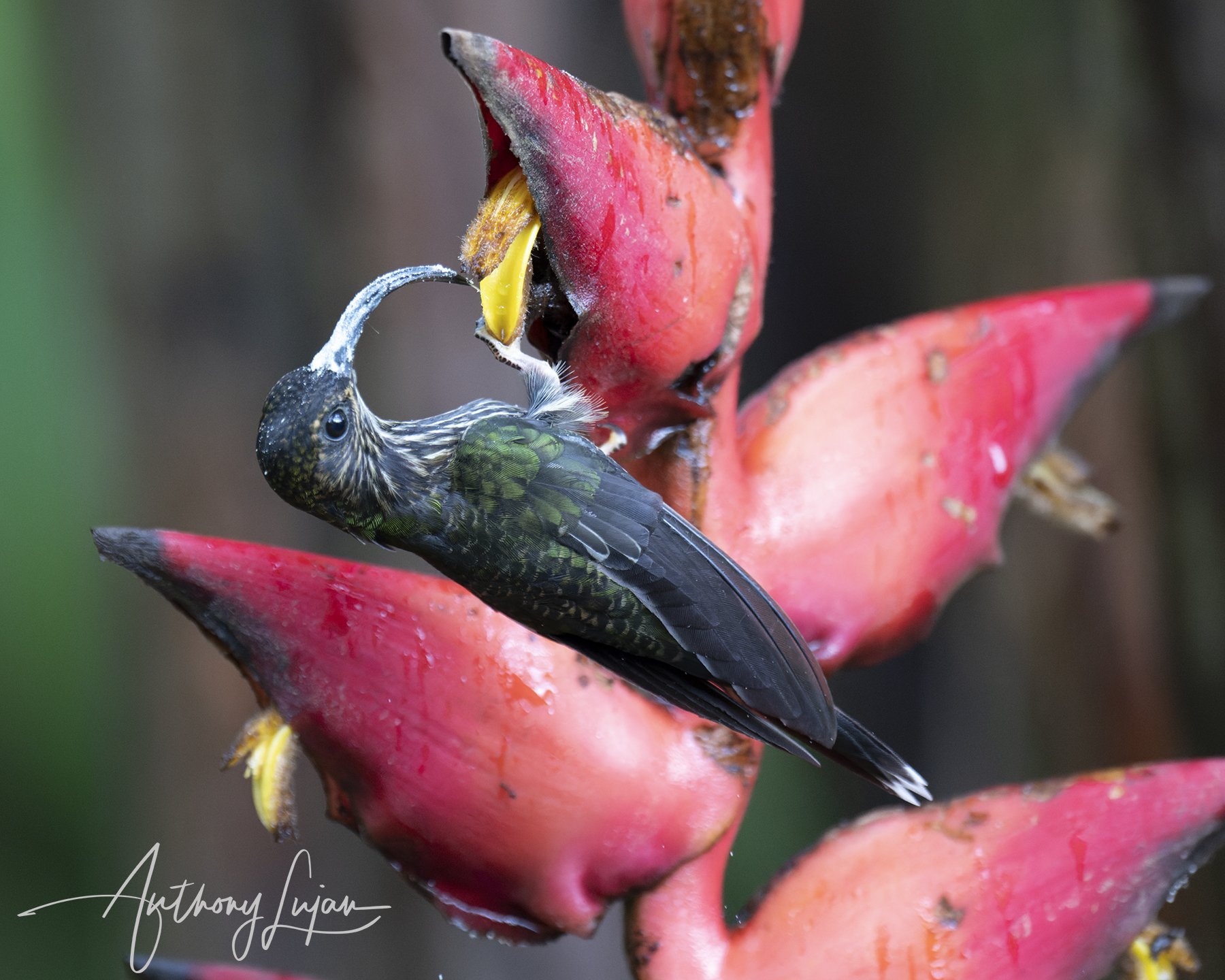White-tipped Sicklebill
Common name: White-tipped Sicklebill
Scientific name: Eutoxeres aquila
Clades: Phaethornithinae - Hermits
The White-tipped Sicklebill is about 11.5 to 13.5 cm (4.5 to 5.3 in) long and weighs about 8.6 to 14.5 g (0.30 to 0.51 oz).
The White-tipped Sicklebill, a streaky hummingbird, is notable for its striking decurved bill, reminiscent of a Velociraptor claw. This distinctive bill sets it apart from all other hummingbird species, except the closely related Buff-tailed Sicklebill, which shares some of its range. To differentiate between the two species, one can observe the tail pattern: the White-tipped Sicklebill earns its name from having only white tips on its tail feathers, while the Buff-tailed Sicklebill features more extensive buff coloring on the outer tail feathers.
These elusive Sicklebills are primarily found foraging on Heliconia flowers in the dimly lit forest understory. Their tendency to inhabit such environments, coupled with their rarity and rapid movements, makes them a challenging sight for birdwatchers. Notably, they are rarely observed visiting feeders.
Overall, the White-tipped Sicklebill stands out not only for its physical attributes but also for its elusive nature, making any sighting of this remarkable hummingbird a truly special and rewarding experience.
3 subspecies:
E. a. salvini
Distribution Costa Rica to W Colombia.E. a. heterurus
Distribution W Andes from SW Colombia (Cauca) to SW Ecuador.E. a. aquila
Distribution E Andes from Colombia to N Peru. Recently noted in W Venezuela (Mérida)
photos taken in Colombia


photos taken in Costa Rica




